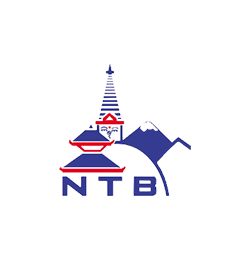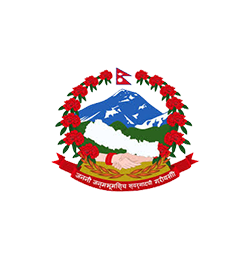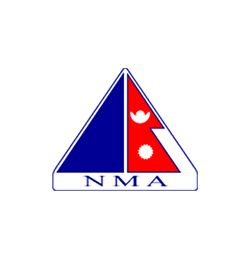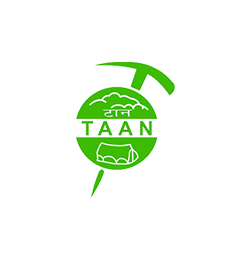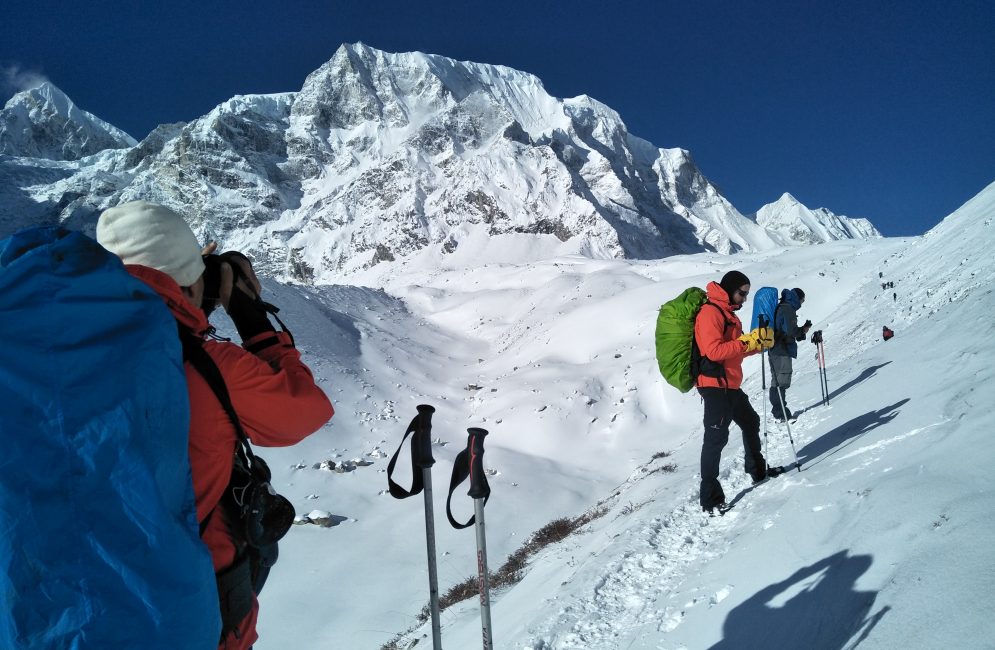
List of Restricted area Trekking in Nepal
- Tsum Valley Trek – 13 Days
- Lower Dolpo Trek – 15 Days
- Manaslu Circuit Trek -16 Days
- Nar Phu Valley Trek – 20 Days
- Manaslu with Tsum Valley Trek – 20 Days
- Upper Dolpo Trek – 24 Days
- Kanchenjunga Circuit Trek -24 Days
Tsum Valley Trek – 13 Days
Introduction
Tsum valley trek is a trek that takes you to one of the most secluded areas of Nepal. The valley rests untouched and undisturbed by modernization. If you seek to trek in isolation and explore secluded regions that are still in their most natural state, the Tsum valley trek is the correct journey for you.
The Tsum valley was only recently opened for trekking. It is a sacred Buddhist pilgrimage site, and many Buddhist pilgrims flock this valley for various religious deeds. Located on the northern side of the Gorkha district, the trails present a beautiful backdrop of the great Ganesh Himal.
“Tsum” directly translates to vivid. Concerning its name, the valley is indeed colorful. Due to its recent opening, much of the land here is still untouched. You can meet the local Tsumba people who have managed to preserve the prehistoric lifestyle. This valley is also famously known as the location where Guru Rinpoche and Milarepa came to meditate.
Highlights of the trek
- Witness the caves where Guru Rinpoche and Milarepa meditated.
- Get breathtaking views of mountains such as Ganesh Himal, Shringi Himal, Boudha Himal, Himalchuli, etc.
- Get acquainted with the rich culture of the Tsumba people.
- Witness some fantastic natural and biological diversity in the rich green jungles of Tsum.
- Trek in one of the most secluded and off-beaten trails of Nepal in the most isolated regions.
Best Season to Go
The best time to do the Tsum Valley trek is during spring (March to May) and autumn (August to November). These seasons have the most favorable weather conditions and temperatures. Other seasons have high chances of rainfall and snowfall, thus raising the trek difficulty. Therefore, it is best to do this trek during autumn and spring.
Tsum valley Trek cost
The cost of this trek is $1350 per person. The cost package includes charges for three meals a day, accommodation, transportation, guides and porters, trekking permits, and other costs.
Tsum valley Trek map
The Tsum valley trek begins with a scenic drive to Soti Khola from Kathmandu. The trek follows the route: Maccha Khola, Jagat, Lokpa, Chhokang Paro, Chhule, Mu Gompa, Rachen Gompa, Chumling, Jagat, Soto Khola, and back to Soti Khola.
Tsum valley Trek difficulty
This trek is a moderately strenuous trek. It is suitable for those who have some experience in trekking and have physical fitness enough to overcome long walks.
Lower Dolpo trek – 15 days
Introduction
Amidst the high mountains of the north where the mighty Dhaulagiri ranges shelter the arid lands, lies the most upper inhabited region of Nepal, Dolpo. The unexplored and untouched region of Dolpo remains a hidden treasure of the far-west. The region of Dolpo was only recently opened for tourism, and it is slowly garnering the attention of travelers by the day.
The entire region of Dolpo is divided into two parts: Lower and Upper Dolpo. The Lower Dolpo trek is a journey that explores the lower areas, which is the Trans-Himalayan region of Karnali. The dry lands here are similar to those of the Tibetan mountains. The region consists of various high passes such as the Kagmara La (5,115m), Numa La (5,159m), and Baga La (5,190m).
The Lower Dolpo trek takes you to one of the most remote places. A major attraction for travelers here is the Shey Phoksundo National Park and the Shey Phoksundo Lake. Encompassing a diverse array of friendly flora and fauna, the virgin lands here call out for exploration.
The Lower Dolpo trek also lets you meet the Dolpo people and get acquainted with their culture. Discover the distinct lives of these people living in the most remote area of Nepal.
Highlights of the trek
- Witness amazing views of the arid landscapes and mountains such as Kanjiroba, Putha, Dhaulagiri, and Norbu
- Visit the tranquil lake of Phoksundo
- Get acquainted with the Bon culture by exploring the local villages
- Enjoy one of the most rural regions of Nepal in isolation
Best season to Go
The best time to do the Lower Dolpo trek is during autumn, which occurs from August to November. During these months, the weather is the clearest, and the temperature is warm and ideal for trekking. Clear skies accommodate great views of the horizon. Unlike many other treks, the spring in Dolpo experiences snowfall. Thus, winter and spring are not recommended for travel as it gets challenging to trek due to the weather and the temperature.
Lower Dolpo Trek Cost
This 15-day trek costs around $1800 per person. Many parts of the trek do not have lodges or teahouses. Therefore, you will be required to camp amidst nature.
Lower Dolpo Trek Difficulty
The Lower Dolpo trek can be challenging for those who have little knowledge and experience of the most rural far west. Services will not be readily available here, and almost all aspects around you will be primitive. Thus, it is suitable for those who have once or more been to the far-west or trekked in remote places.
Lower Dolpo Trek Map

The Lower Dolpo trek begins with a flight from Nepalgunj to Jhupal. Trekking commences as you head towards Dunai for the first day. From here, you take the route through; Tarakot, Lammchaur, Toltol, Do Tarap, Numa La Base Camp, Numa La pass, Gyambo, Temche, Ringmo Gaun, Shey Phoksundo lake, Chhepka, Jhupal, and back to Nepalgunj.
Manaslu Circuit Trekking – 16 Days
Introduction
Out of the numerous isolated treks of Nepal, the Manaslu Circuit Trek is one of the most beautiful trekking journeys exposing the rural and breathtaking parts of the country. Situated in the Gorkha district, the Manaslu region is a center for natural and cultural beauty. The Manaslu circuit trek rejoices in the eighth highest peak of the world. Besides, the journey is also a great way to experience the ethnic culture of the region.
The Manaslu circuit trek is one of the off-beaten treks of Nepal. Through this journey, you can witness the magnificent views of the glorious Himalayan peaks like the Manaslu Himal, Annapurna Ranges, and the Gangapurna Peak, among many more.
You also cross one of Nepal’s highest mountain passes- the Larkya La Mountain Pass. It was only in 1991 that the Manaslu region was open for exploration. Despite its beauty, the region rarely gets crowds of trekkers. Thus, one can enjoy a journey in isolation, far away from the crowd. This has also led to the valley retaining most of its pristine natural beauty untouched by modernization.
While exploring the valleys, you come across several settlements where you encounter an authentic ethnic experience that presents a cultural flavor to the journey. The path encompasses the ancient salt trade route and traverses into verdant woodlands and emerald pastures decorated with the surreal landscape.
Highlights of the trek
- Witness amazing views of mountains such as Ganesh, Manaslu, Hiunchuli and many
- Explore some of the highland villages and get acquainted with the Nepali-Tibetan people and their Nuri culture.
- Exploring the Budhi Gandaki River valley and witnessing the fantastic Manaslu glaciers.
- Embark on the journey of crossing the incredible Larkya-La pass of over 5215 meters
- Experience the diversified unspoiled ecosystems of the Manaslu region.
Best season to Go
Spring and autumn are the best time to go for the Manaslu circuit trek. Generally occurring from March to May and autumn to November, these months have the best weather and temperature conditions to support a good trip.
With low amounts of rain or snow, the trails are dry, and skies are empty of clouds. This welcomes splendid views of the landscapes and mountains, whereas dry trails make trekking safer.
Trekking during winter is also possible. However, it can be very challenging. This is due to the dramatic drop in temperature when the numbers are below zero. The high altitude regions are icy during winter.
Manaslu Circuit Trek Cost
The Manaslu circuit trek as a package costs around $1,395 per person. The package includes your transportation costs, accommodation and meal charges, fees for guides and porters, and similar costs for services that are required on the trip.
Manaslu Circuit Trek Difficulty
The Manaslu circuit trek is moderately difficult. You will have to walk for about 6 to 7 hours a day on average. Thus, this trek is only suitable for you if you can bear the amount of walking you need to do to complete the journey.
Manaslu Circuit Trek Map
The Manaslu circuit trek begins with a drive to Soti Khola from Kathmandu. Trekking commences from Soti Khola, and the route follows the path: Maccha Khola, Jagat, Deng, Namrung, Lho Gaun, Samagaon, Samdo, Dharamsala, Larkya La Pass, Bimthang, Dharapani, and drive back to Kathmandu.
You will spend two acclimatization days in Samagaon and Samdo. This is to allow your body to adapt to the change in altitude and function with the amount of oxygen available in the atmosphere.
Nar-Phu Valley Trek -20 Days
Introduction
One of the youngest treks of Nepal is the Nar Phu Valley trek. It was only opened in 2003 and remained as one of the least traveled areas in Nepal. However, this has preserved its originality, untouched by modernization.
The Nar Phu Valley trek lies just outside of the Annapurna circuit route. The trek embraces more of the remote side of the region where you can find isolated villages, Tibetan-Nepali communities, lush forests, narrow canyons, Buddhist Gompas decorated in the backdrop of the majestic mountains.
Especially for those who want to travel in the Annapurna region to witness the glorious mountains, but desire off the beaten trails, the Nar Phu Valley trek fits precisely in the description. The Nar Phu valley trek explores the wild and untouched vicinity of northern Annapurna.
Highlights of the Trek
- Explore the Nepali-Tibetan villages and discover their culture and lifestyle.
- Traverse across fantastic rock structures, land formations, and the diverse topography of the region.
- Witness breathtaking views of mountains such as Manaslu, Dhaulagiri, Annapurna I, and many more
- Challenge yourself to cross the iconic pass of Thorong La at 5416 meters and Kanga La Pass at 5,306 meters.
- Unfold the religious aspect of the journey through the vivid Chortens, gompa, monasteries, prayer flags, and the Muktinath temple
Best season to Go
The best time to do the Nar Phu valley trek is during autumn and spring. These seasons occur from August to November and March to May every year. Autumn has clear weather with mildly warm days. Views during these months remain unobstructed as the skies are clear, and the weather remains dry.
Similarly, spring also accommodates similar weather conditions. Moreover, spring is the time for flowers to bloom. Rhododendrons flowers burst in the forests decorating the greenery with their brightness.
In contrast, winter, which occurs from December to February, is freezing. Most of the high altitude regions freeze during these months. Trails are also covered with heaps of snow. Trekking during this season is challenging, difficult, and risky.
Similarly, summer and monsoon collide from June to August. Heavy rainfall takes over most of the route. The trails are left muddy and wet, making it very uncomfortable and risky to trek. Thus, you should schedule your trek either in the autumn or spring season.
Nar Phu Valley Trek Cost
The cost of this trek is around $1690 per person. The cost generally includes transportation costs, accommodation, lodging, meals, guides, porters, and trekking permits.
Nar Phu Valley Trek Difficulty
The Nar Phu valley trek is moderately difficult and adventurous. The 20-day long trip needs a heavy amount of physical effort from trekkers. You will walk around 6 to 7 hours a day. Thus, this trek is suitable for those who are keen to trek and have adequate physical fitness to endure the amount of travel.
Nar Phu Valley Trek Map

The journey of the Nar Phu valley trek begins with a scenic drive to Syange from Kathmandu. From Syange, the trekking on foot begins. You take the route through Dharapani, Koto, Dharmashala, Kyang, Phu village, Nar Phedi, Nar Gaun, Kang La Base Camp, Manang village, Pisang village, Chame, Tal Besi, Syange, and back to Kathmandu.
You will get to spend an additional day at Phu village for acclimatization. Spend this day getting used to the higher altitudes and let your body adapt to the atmosphere. This can help you continue the trek without falling sick.
Manaslu Circuit with Tsum Valley Trek – 20 Days
Introduction
The beauty of the world’s eighth tallest mountain, Manaslu, is unparalleled. It is known as one of the most prestigious hidden gems of Nepal. Moreover, you get a sight into a more secluded valley known as the “Tsum” valley.
With the combination of the glorious snow-capped mountains and the magnificence of the lush and wild landscapes of Tsum valley, this trek is an outstanding journey. The Manaslu with Tsum Valley Trek was only recently opened and has garnered the attention of many travelers who seek to travel in remote areas close to nature.
The route of the trek follows a path close to the Nepal-Tibet border. Diverse highland settlements and ancient monasteries populate the region. A bundle of unique flora and fauna inhabit the dense woodlands surrounding the trails. While traveling here, you might get a glimpse of the rare Himalayan Thar and Blue Sheep if your timing is right.
The unusual sounds of the gushing rapids of the Budhi Gandaki River, Machha Khola, and Soti Khola accompany your ears as you proceed across this beautiful journey. The major highlight of this trek is summiting the Larkya La Pass at 5,160 meters. Also, as the highest point of the trek, you get a breathtaking 360-degrees view from here.
Best season to Go
The best time to do the Manaslu with Tsum Valley trek is during the spring and autumn seasons. These seasons occur from March to May and August to November. During these months, the weather is dry and has the least chances of precipitation. With cloudless skies, you get unobstructed views of the horizon. Walking on the dry trails is also much more comfortable and safer.
Moreover, the weather is also mildly warm, accounting for a pleasant atmosphere for trekking. On the other hand, winter invites harsh weather conditions to the region. Snowfall occurs on most days, and the temperature drops below 0 degrees Celsius.
Most trails are covered in snow, and trekking is difficult during this season. However, the mountains look exceptionally beautiful, with a blanket of snow covering their bodies.
Summer and monsoon occur at the same time in Nepal. Thus, the months between spring and autumn are wet throughout. The trails are slippery and hard to walk on. Most areas have risks of avalanche and landslides. It is best to avoid this season for trekking.
Highlights of the Trek
- Travel to the world’s eighth tallest mountain, Mt. Manaslu
- Witness amazing views of mountains such as Manaslu, Ganesh, Shringi Himal, Hiunchuli, Cheo Himal, Kang Guru, and Himlung Himal along the Annapurna massifs.
- Explore some of the rural villages and get acquainted with the Tsumba and Nuri culture.
- Conquer the Larkya-La pass at an elevation of 5215 meters.
- Witness the fantastic natural and biological diversity of the isolated region of Manaslu.
Manaslu with Tsum Valley Trek Cost
The cost of this trek is $1600 per person. The cost includes accommodation and meal costs, transportation, guides and porters, trekking permits, and official charges by the government.
Manaslu with Tsum Valley Trek Difficulty
This 20-day trek is moderately difficult and is strenuous for those who aren’t native to trekking. Trekkers are to walk about 5 to 6 hours per day on diverse terrains. This trek is most suitable for those who have good physical fitness and have gone on various long treks before.
Manaslu with Tsum Valley Trek Map
The Manaslu with Tsum valley trek begins with a drive to Maccha Khola from Kathmandu. Trekking on foot commences here as you take the route: Jagat, Lokpa. Chhokangparo, Chhule, Mu Gompa, Rachen Gompa, Chumling, Deng, Namrung, Samagaon, Samdo, Dharmasala, Bimthang, Dharapani, Syange, and back to Kathmandu.
Upper Dolpo Trek – 24 Days
Introduction
One of the most remote places in Nepal is the Dolpo region. The Upper region of Dolpo is an exquisite location. The secluded regions lie between the Tibetan plateau and the Dhaulagiri ranges of Nepal. This hidden heaven possesses barren lands on the backdrop of marvelous mountains and diverse landscapes.
Upper Dolpo is a beautiful place that lies northwest of the Karnali region. It is known as one of the most isolated regions of Nepal. Due to the challenging topography, this region is not easily accessible, and only the keenest trekkers explore this area. Nevertheless, Upper Dolpo is an excellent place to cherish the kind of natural beauty Nepal possesses.
The lush forests of Dolpo are home to a variety of wild birds and animals. In the Upper Dolpo trek, you might even come across some beautiful rare Himalayan wildlife such as the Musk Deer, Himalayan Blue Sheep, and Snow Leopard.
The beauty of Dolpo has also been publicized by a famous Oscar-nominated film of 1999, “Himalaya.” However, not everyone is capable of traveling here. Most areas of the Upper Dolpo region remain unexplored and untouched.
The Upper Dolpo Trek takes you through various vivid landscapes and leads to the large mountain ranges. You also cross the famous Numa La pass, which is one of the most challenging and exciting parts of the trek.
One of the major highlights of the trek is the spectacular Phoksundo Lake and the Phoksundo National Park. The Upper Dolpo Trek boasts the western natural splendor and the unique cultural diversity. The communities inhabiting this region are mostly of Tibetan origin and are called Bon people.
Highlights of the Trek
- Explore the remote trans-Himalayan region of Nepal and discover the unique wilderness of the west.
- Witness amazing views of mountains such as the Dhaulagiri, Kanjirowa Himal, Crystal Mountain, and many more.
- Experience the cultural and religious aspect of Upper Dolpo as the trek unfolds the ancient monasteries and the unique Tibetan Buddhist culture of the local people.
- Conquer the Kang La pass (5350m) and witness amazing 360-degree views of the entire region.
- Visit the azure Lake of Phoksundo, also the deepest lake of Nepal.
Best season to Go
Although Lower Dolpo experiences heavy rainfall, the Upper Dolpo region lies in the rain-shadow area, and thus receives no downpour. There are different suitable times to do the Upper Dolpo trek than most of the other treks of Nepal.
The summer/monsoon season throughout is clear, and this is the best time to do this trek. This season occurs from June to early August. Temperatures during these months are warm and pleasant. This is the time with the least chances of snowfall in the region.
Similarly, late spring around May and early autumn around august and September are also suitable months to do this trek. Apart from these dates, there is heavy snowfall throughout the region, and most trails are blocked.
Upper Dolpo Trek Cost
The total cost for this trek is $3700 per person. This charge covers costs for accommodation, meals, transportation and flight, porters, guides, etc.
Upper Dolpo Trek Difficulty
This 24-day long trek is a moderately difficult journey. If you are new to the trekking world, you will have trouble keeping up with the trek. Thus, it is suitable for those who have been trekking for some time and have achieved the physical strength required to walk long distances for consecutive days.
Upper Dolpo Trek Map

The journey to Upper Dolpo begins with a flight to Juphal from Nepalgunj. From here, trekking on foot commences.
You take the route: Dunai, Chhekpa, Samduwa, Phoksundo lake, Phoksundo Khola Camp, Low Camp, Shey Gompa, Namgung, Saldang, Yangtsher Gompa, Sibu, Jeng La Phedi, Tokyu, Dho Tarap, Tarap Khola, Khani Gaun, Tarakot, Dunai, Jhupal, Nepalgunj, and back to Kathmandu.
Kanchenjunga Circuit Trek – 28 Days
Introduction
Kanchenjunga was once thought to be the tallest mountain on Earth. Although later it was proved wrong, the peak still managed to stay as the third highest peak in the world. But this fact in no way compromised the grandeur of Kanchenjunga. Trekkers from all over the world are still mesmerized by its beauty.
If you seek adventure in remote areas, aren’t afraid of a little challenge, and are ready to travel on off the beaten tracks, then the Kanchenjunga Circuit Trek is the perfect journey for you. This trek explores the splendid natural glory of the Kanchenjunga, which still rests in its undisturbed natural state.
“Kanchenjunga” is derived from the Tibetan word “five treasures of snow.” Indeed, Kanchenjunga has five precious peaks of symbolizing treasure. Local people of this region still worship the Kanchenjunga Mountains.
The Kanchenjunga circuit begins from lowlands of lush landscape, tropical jungles of rhododendron, oak, and chestnuts. Gradually, the trail ascends towards high altitude alpine forests and eventually reaches dry rocky and icy terrain. This dramatic diversity of vegetation holds a unique bundle of floras and faunas.
Besides its natural richness, you also dive deep into the local communities. The region is inhabited mostly by Rai and Limbu ethnic groups. Get acquainted with their culture and lifestyle as you delve into the journey’s ecstasy.
Best Season to Go
The best time to do the Kanchenjunga circuit trek is from March to May and August to November. These months occur during the spring and autumn seasons, respectively.
It is easier and more enjoyable to trek during these seasons as the weather conditions are the most favorable. The skies are clear, which provides unobstructed views of the horizon and no rainfall.
In contrast, summer experiences heavy rainfall, and trekking is a hassle. Wet and slippery trails also make trekking riskier during summer. Similarly, the winter is freezing. Snow covers most of the region, and most high altitude places remain closed. Thus, it is highly recommended that you travel during spring or autumn.
Highlights of the Trek
- Enjoy the grandeur of the world’s third-highest mountain and the natural beauty that follows
- Travel on some glacial paths at Yalung Glacier.
- Witness amazing views of iconic mountains such as Kanchenjunga, Makalu, Everest, etc.
- Explore the quaint nature and the diverse flora and fauna of the dense woodlands.
- Get acquainted with the Rai and Limbu people. Discover their culture and lifestyle.
Kanchenjunga Circuit Trek Cost
The cost of this trek is around $2590 per person. The package provides you with accommodation, meals, guides and porters, transportation, trekking permits, and government taxes and charges.
Kanchenjunga Circuit Trek Difficulty
The Kanchenjunga circuit trek is a long journey. It can be very challenging for those who have not gone on long treks. The difficulty of the trek is around moderate as it covers a large distance, and trekkers will be walking for more than two weeks. This trek is only suitable for trekkers who have gone on at least two week-long treks in the Himalayas.
Kanchenjunga Circuit Trek Map
The journey of the Kanchenjunga Circuit trek begins with a scenic drive to Birtamod. Then, you continue to drive to Taplejung.
Moreover, the trekking commences from Taplejung as you take the route: Mitlung, Chirwa, Lelep, Amjilosa, Gyabla/Kyapra, Ghunsa, Kambachen, Lhonak, Kanchenjunga Base Camp, Ghunsa, Sele-La Kharka, Cheram via Sele La Pass and Sinion La pass, Ramchaur, Yalung Base Camp, Tortung, Yamphudin, Phumphe Danda, Simbu, Taplejung, drive to Ilam, Antudanda, Fikkal, and drive back to Kathmandu.
We refer you to visit List of 25 trekking in Nepal.

